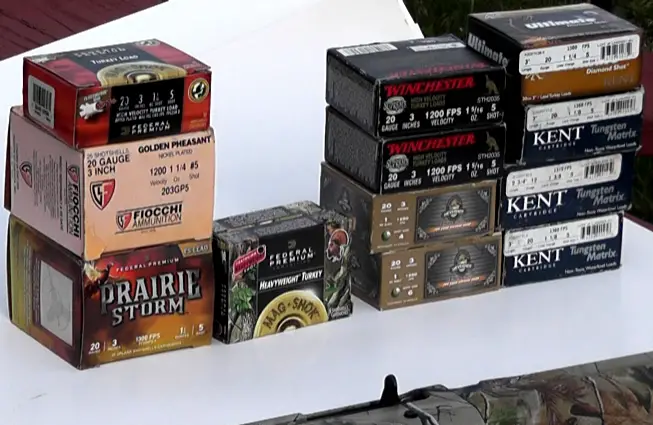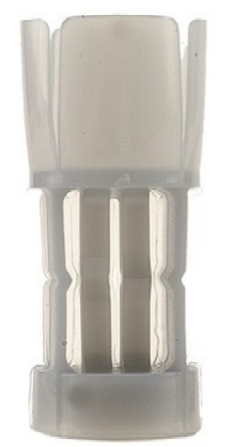



The Death of the 20 Gauge Autoloader

While
a bit premature, the last twelve years have displayed a lack of innovation
from the brand name companies, and a resultant lack of excitement from
consumers. That there just hasn't been much new or improved to actually
get excited about is the reason.
Look at Beretta for example. They don't seem to have a current production 20 gauge autoloader. That's something that is hard to believe, much less understand. If you want a mid-range or slightly upscale, name-brand, modern 20 gauge three inch autoloader to carry with any variety of configurations, it is Benelli or Browning. That's one of the reasons there is so very little hope for the 16 ga.-- there hasn't been a new, quality 20 gauge autoloader in years, much less a 16. The Benelli Super90 / Montefeltro is from the 1987-1988 era. The Gold (just renamed the Silver) is from 1994. The discontinued A391 is from 1999 or thereabouts. Nothing vividly remarkable in the last 12 years in 20 gauge. Yet, Maxus, Versa-Max, new A5, A300, Vinci, have displayed zero movement in 20 gauge, but with more than enough ugly 3-1/2 plastic 12 gauges to satisfy anyone. My understanding is that the Beretta A400 20 gauge was considered "out of development" in January 2012, but actual availability is the usual ongoing mystery.
The twenty gauge has been neglected. Certainly, loud ad-brags and marketing hyperbole does work from time to time, otherwise no intelligent company would waste money on ads and soundbites. Misrepresentation takes its toll. Twelve gauge autoloaders have been touted to “carry like a 20,” “handle like a 20,” and shoot “softer than a twenty.” It is all quite easily shown as untrue, for the only way a 12 gauge is going to carry like a six pound 20 gauge is if it actually weighs six pounds. Gauge has absolutely nothing to do with recoil, but that doesn't stop folks from claiming that it does. You won't find “gauge” in any free recoil equation for that reason. It doesn't fit and has right at zero percent to do with recoil.

We have taken the last six wild turkeys were taken with 20 gauge repeaters, including Dad's 26 lb. gobbler with 1-1/4 inch spurs from this year taken with an Ithaca M37 Turkeyslayer. No reason to fuss with a 12 gauge in a blind today, that I know of.
I'm writing this after another enjoyable afternoon evening of dove and teal hunting. There is no mystery about what drops doves here in Illinois year after year. After watching my eight-four year old father drop long-range dove doubles with either his A-5 Twenty Magnum or his older Browning Gold 20, it is hard to understand what the fuss is about. Winchester AA 1 oz. #7-1/2 (AAH207, 1165 fps) pattern as well as any 12 gauge 1 oz. loads, according to the pattern board. That's what I've taken every single dove with this year, whether though a B-80 (made by Beretta, branded for Browning), a Benelli M2, or one of my A-5 Twenty Magnums. The teal were taken this year with Kent Tungsten Matrix loads.

While I'm certainly not above goose-hunting with a 12 gauge, not by any means, within range with the right load and choke, the 20 gauge does quite well. Sure, in a dedicated goose gun, 12 gauge is the obvious choice but within range . . . it isn't nearly so obvious, particularly for teal and mallards.
Part of this is understandable, for several folks like to say, “I hope it comes out in 20 gauge.” With completely different tooling and different action parts, it isn't as easy as just hitting the twenty gauge button and out she comes. A desirable 12 gauge doesn't always mean a desirable 20 gauge design.

The Winchester Model 21 introduced the three inch 20 gauge shell that was made available to the public in 1954 as the "Western Super-X Magnum." Far from being a recent development, the three inch 20 gauge shell has been with us for over 55 years. Due to the advances in propellants, buffering and wad materials, there are loads today for the 20 gauge far more advanced than the loads introduced 50 years ago. I’m referring to the Winchester STH 2035 1-5/16 ounce #5 shot loads and the Federal PFC 258 1-5/16 oz. #5 shot loads shown above in particular, along with other tested shells. The Federal Heavyweight shells throw 1-1/2 oz. have already made the 20 a better turkey gun. All are spectacularly good 20 gauge loads (as tested in Browning Gold, Silver, A-5 20 Mag, B-80, and Beretta A303 shotguns), often surpassing the patterns of common 1-1/4 ounce 12 gauge loads.
There are several reasons for this. The moderate muzzle velocities (Win. = 1200fps, Fed. = 1185 fps) promote denser patterns than high velocity loads, the buffering helps and so does the quality of the shot. Having 31% more pellets than a standard 2-3/4 in. 20 gauge hunting shotshell is more than substantial.

Many have heard that the 20 gauge “doesn't pattern as well as a 12.” This is easily disproved, for the only rational barometer of pattern is percentage. A 70% pattern in a 30 inch circle at 40 yards is no different from a 28, a 20, a 16, a 12, or a 10 gauge. If you throw a 1 oz. load from a 28, 20, 16, or 12 gauge that creates a 70% pattern, you've done the same thing. If the absolute tightest pattern had anything to do with wingshooting, we would all be shooting X-X-X-F or turkey chokes at everything flying. Of course we don't, for the tightest pattern (and smallest pattern diameter) is rarely the most useful or desirable.

This
is in stark contrast to the world of rifles, where the motto has long
been “when all else fails, invent a cartridge.” Certainly, the
12 gauge has clear advantages in case capacity which become more pronounced
when using steel. Yet, I wonder how many people realize that when shooting
classic 20 gauge payloads in a 12 gauge, they are loading their shotguns
with more air and plastic than anything else? The twenty gauge autoloader
is far from dead, of course, and there is no reason to think the demise
of the twenty is going to happen. But, currently, the 20 gauge autoloader
is a platform that is currently being sorely ignored. Let's hope that
changes so we don't have the next twelve years unmarred by progress.
Copyright 2012 by Randy Wakeman. All Rights Reserved.

Custom Search

Custom Search



